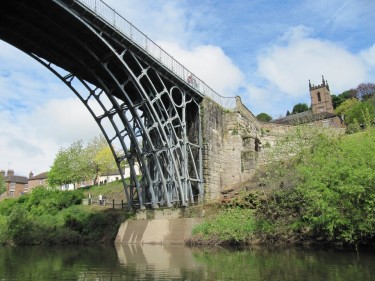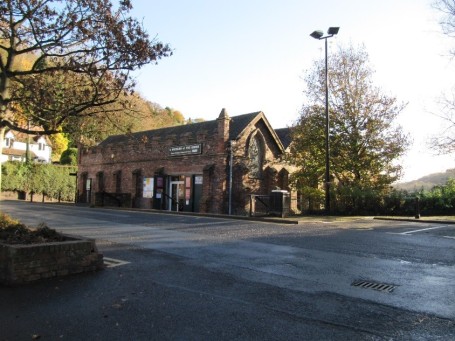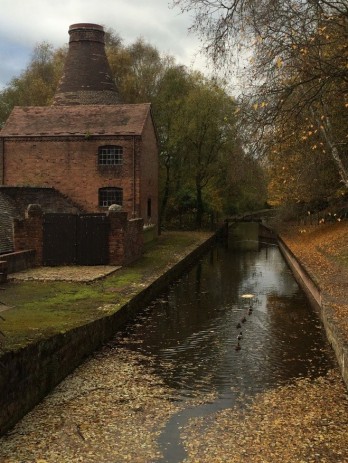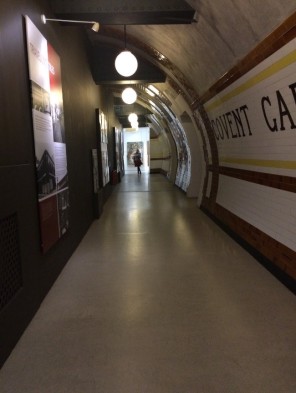Ironbridge Gorge Museum Trust run 10 museums around Ironbridge Gorge World Heritage Site, each telling a different part of the story of the area, the people who have lived there and its historic industries. A passport ticket allowing entrance into all of the sites is the best value way of seeing them.
The conference is based in Coalbrookdale, where the Museum of Iron, Enginuity and the Darby Houses are located as well as the Old Furnace, one of the major monuments of the World Heritage Sites. The evening reception is being held at Blists Hill Victorian Town, and the ticket covers entrance to the museum site.
Around the Conference Venue (Coalbrookdale)
Within a short walk of the venue there are three museums – the Museum of Iron, Enginuity and the Darby Houses, as well as the fabulous Old Furnace.
Museum of Iron – only just reopened after renovation, the Museum of Iron tells the story of the iron making industry of the area as well as showcasing some of the iron castings made here.
Coalbrookdale Museum of Iron website

Enginuity is an interactive science and technology museum celebrating industry and technology.

The Darby Houses are the former homes of members of the Darby family, one of the most prominent families of ironmasters in the Gorge. The two houses are Dale House and Rosehill House, and illustrate the way of life for the 18th and 19th century Quaker families who lived here.
Around Ironbridge
As well as the incredible Iron Bridge and numerous little shops and cafes, Ironbridge is also home to two of the Gorge’s museums.
The Tollhouse – this tiny museum is located in the tollhouse on the Iron Bridge and tells the story of the people behind the Bridge’s construction.

Ironbridge and Tollhouses website
The Museum of the Gorge gives an overview of the history of Ironbridge Gorge and its industries, including a huge model of the Gorge and a film.

Coalport and Blists Hill
Coalport is an area of Ironbridge Gorge located in the eastern end of the Gorge, on the northern side of the River Severn. The Tar Tunnel and Coalport China Museum are located here whilst, further north, along one of the tributary valleys, is Blists Hill Victorian Town.
Blists Hill Victorian Town is by far the largest of the Ironbridge Gorge Museums and is a Living Museum where you can see a representation of life in the area 100 years ago including a pharmacy, iron foundry, photographers, sweet shop, bakery and funfair (in summer).

Coalport China Museum is located in the Coalport China Works buildings, allowing you to see examples of ceramics in the factory in which they were made. As well as the iconic bottle kilns, you can also see demonstrations of how the china was made and there is also a resident glass blower.

The Tar Tunnel is located just along the canal from the Coalport China Museum. The Tar Tunnel was where, in an attempt to construct an underground canal in the 18th century, natural bitumen was struck and was extracted instead. The tunnel was a great curiosity in the eighteenth century and bitumen still oozes gently from the brick walls today. After the canal project was abandoned the Hay Inclined Plane was built instead, its base being alongside the canal basin. You can’t walk along the tunnel at the minute, but you can look along it from the entrance.

Jackfield and Broseley
On the southern side of the river is the settlement of Jackfield, and if you travel further south out of the Gorge itself you will find the historic mining town of Broseley. Jackfield Tile Museum and the Broseley Pipeworks are located in these areas.
Jackfield Tile Museum, like the Coalport China Museum, showcases examples of the product made within the factory buildings where they originated. The museum is housed in the former Craven Dunhill Tile Works building, and the company has moved back onto the site in recent years allowing you to see tiles being made during your visit.

The Broseley Pipeworks is presented as a time capsule, showing it as it was when it was abandoned in the 1950s. The works was once home to one of the most prolific clay pipe makers in Britain.
Information about accessibility can be found on the museums’ website:
http://www.ironbridge.org.uk/plan-your-visit/faqs/
By Coralie Acheson
Ironbridge International Institute for Cultural Heritage
